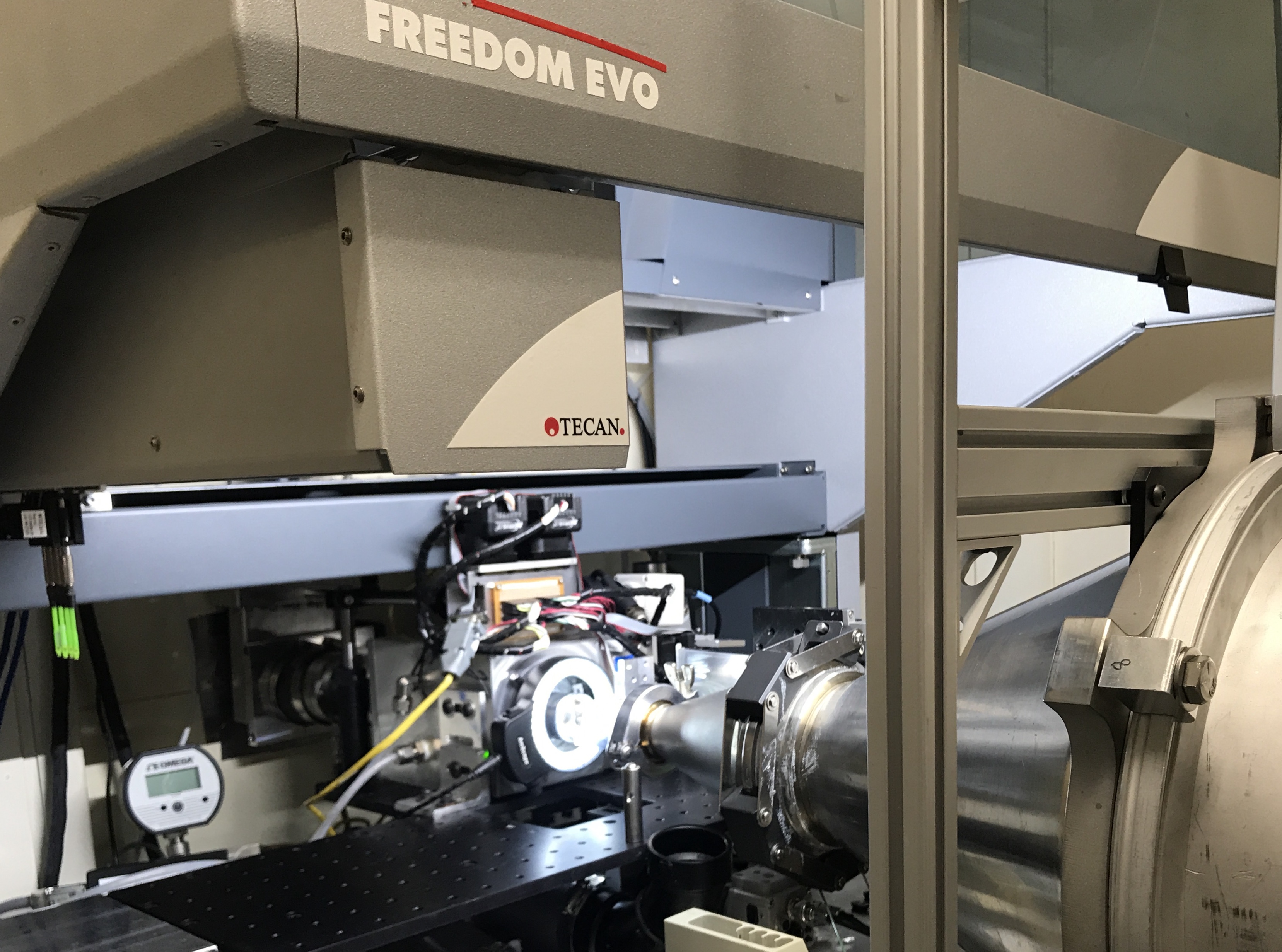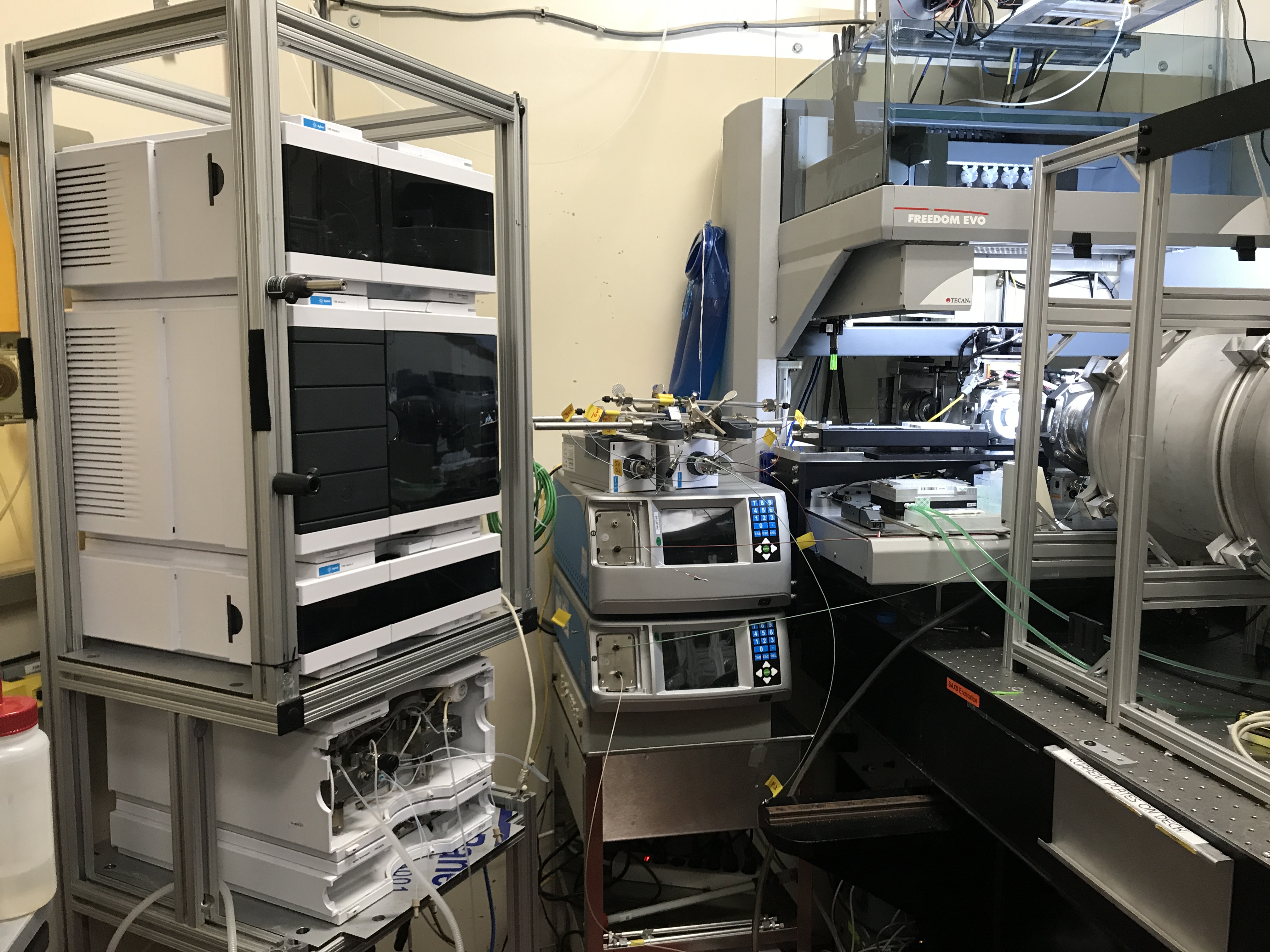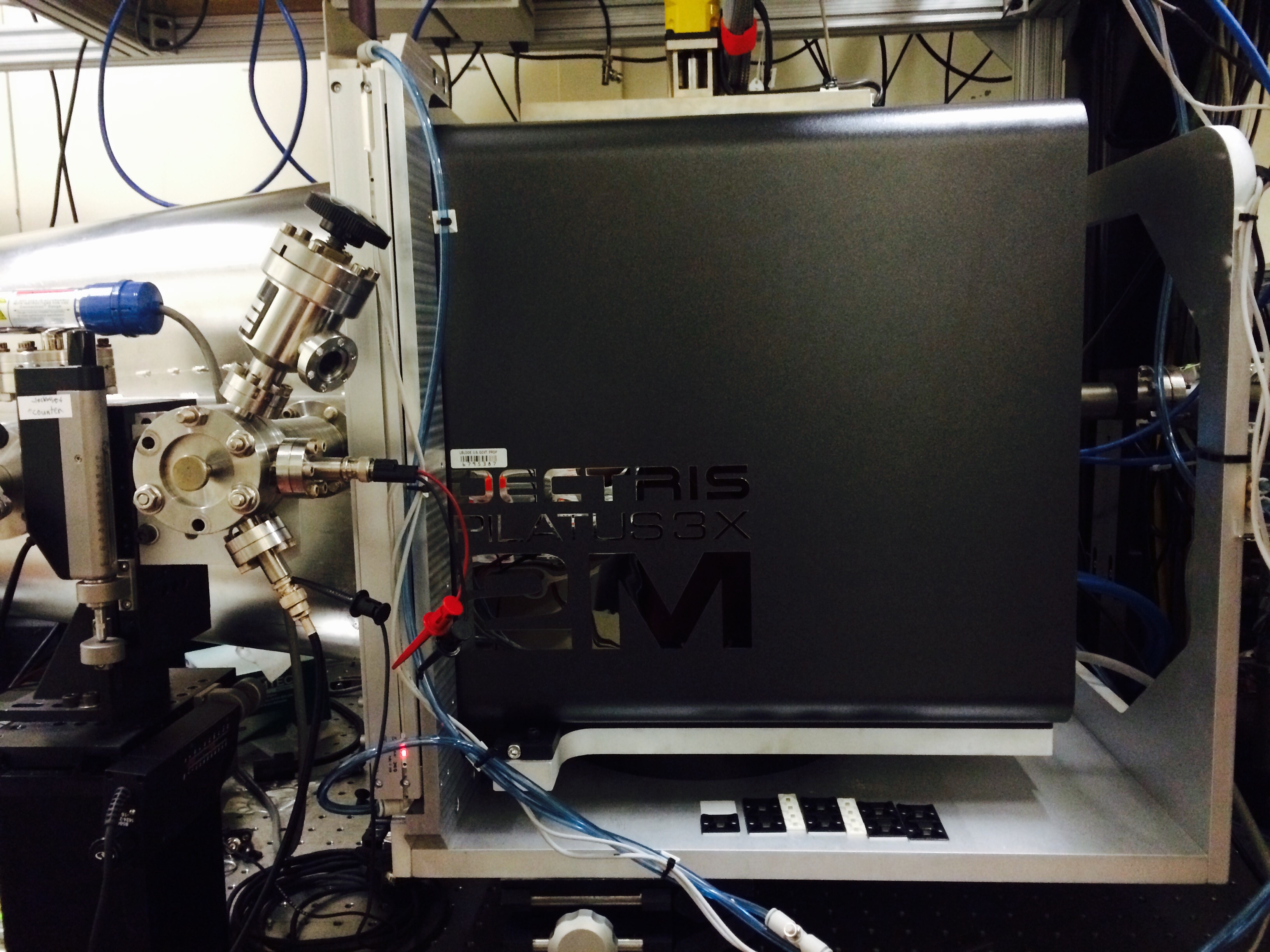SAXS at SIBYLS
Structurally Integrated BiologY for Life Sciences

The SIBYLS Beamline is an NIH and DOE-funded beamline specializing in the collection of scattering data from biological samples. Major funding is provided through the Taskforce 5 BRaVE initiative, NIH P30 program grant ALS-ENABLE, and the DOE-funded IDAT program.
HT-SAXS

High Throughput SAXS
For sample delivery we use a high-precision multichannel Tecan Evo 100 liquid handling robot with four automated arms. The sample is carried from plate to beam inside the needle tip and exposed through a mica window increasing throughput and preventing sample degradation, allowing us to collect more samples and deliver more data
SEC-SAXS

Size-Exclusion Chromatography SAXS
Separation of analytes is accomplished by size-exclusion chromatography (SEC) using an agilent 1260 series HPLC with a Shodex analytical column at a flow rate of 0.5 ml/min. Eluent is split 2 to 1 between X-ray synchrotron radiation and a series of our four inline analytical instruments
Pilatus3 2M

Dectris Pilatus3 2M Detector
Mail-in SAXS Program
We offer a small angle X-ray scattering (SAXS) data collection service for users world wide. SIBYLS is unique among most SAXS beamlines in that users ship samples overnight either in a 96-well plate (HT-SAXS) or Eppendorf PCR tubes (SEC-SAXS) to our lab at the Advance Light Source. Our experienced SIBYLS staff along with the beamline scientists collect your data. No more expensive traveling and learning curves to get valuable SAXS data for your research. Both academic (free) and proprietary interests are welcome.